On January 24, 2013, Twitter released Vine, a mobile service that lets you capture and share short looping videos. We set out to learn just how popular Vine has become in its first month of existence and how its performance has stacked up against competitors like Viddy and Socialcam.
We loaded data from Twitter’s API into RJMetrics and here’s what we found:
- Overall, video creation is still an extremely underdeveloped market. Only about 4% of highly active users shared a video through Vine or a top competitor during Vine’s first month on the market. In that same period, 98% of the same group shared at least one photo through a leading photo sharing service.
- In its first month, Vine steadily gained market penetration to 2.8% of Twitter’s highly active users, blowing past competitors Viddy and Socialcam, which were used by 0.5% and 0.2% of the same population, respectively.
- Twitter’s built-in tools for photo and video sharing are dominating the competition. Vine.co and pic.twitter.com are the most popular tools in their respective categories by a wide margin.
Vine Adoption
Vine showed impressively stable adoption growth over the course of its first month. We were expecting to see a spike in adoption around the time of the announcement followed by a leveling-off period, but instead the percent of new users each day has remained consistent. This is a good sign for future growth because the rate of adoption does not appear to be slowing as time goes by.
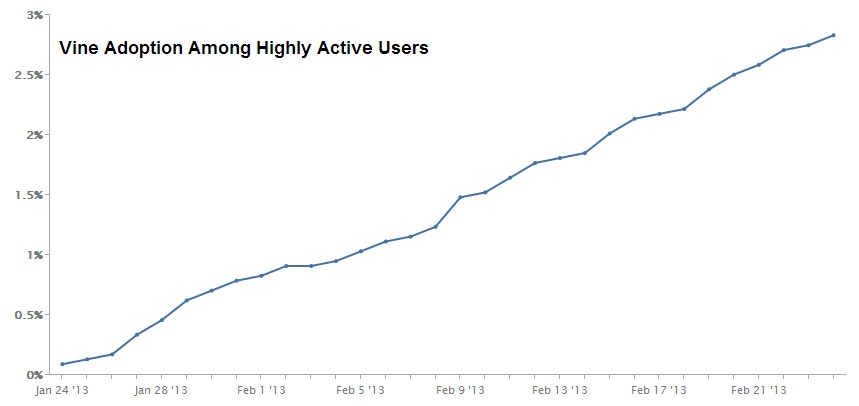
Vine vs. Viddy vs. SocialCam
In Vine’s first month, the percent of highly active users who used Vine was meaningfully higher than the percent who used competitors Viddy and SocialCam.
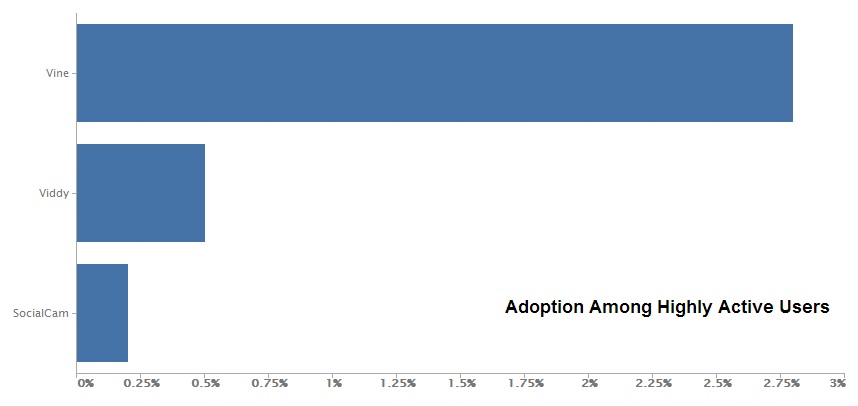
We were concerned that this might not be an apples-to-apples comparison since many users may have just been “trying out” Vine in this month. As a check, we looked at the average number of times each of these tools was used during the month. As it turned out, repeat usage of Vine was actually more likely than the other apps.
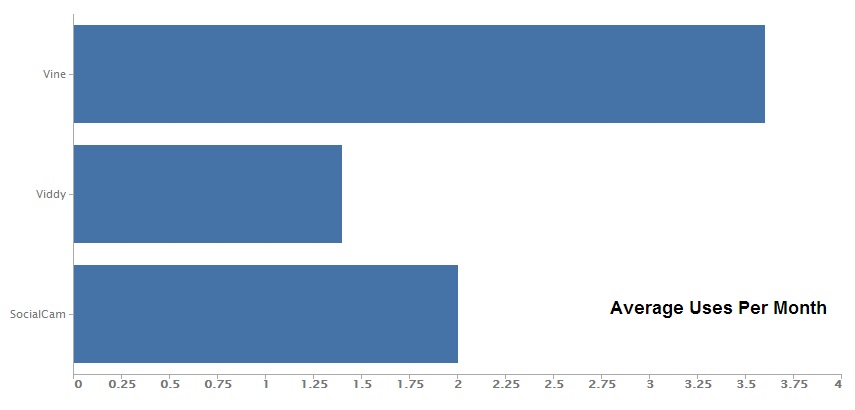
Video vs Photo
While Vine’s performance is impressive relative to its competitors, it’s still a tiny player in the universe of media sharing on Twitter. We looked at the percentage of users who linked to various media sharing services and found that photos represent the vast majority of the links sent out by highly active users.
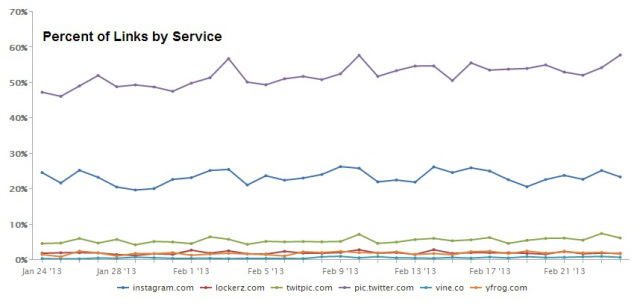
As you can see in the chart above, native Twitter photo hosting (pic.twitter.com) is the dominant player, followed by Instagram and then a number of less prominent competitors. When you remove Twitter and Instagram, you can see just how small a player Vine is when it comes to sharing media.
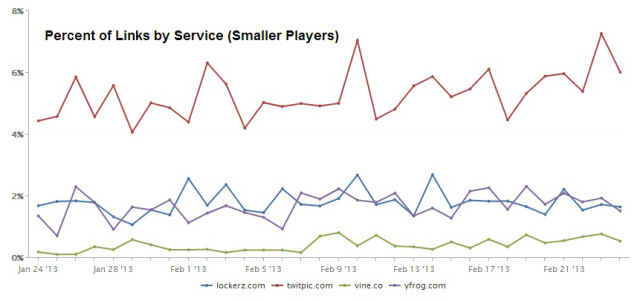
About The Data
We decided to sample from Twitter’s most active users to find early-adopter activity. Twitter’s API was used to identify and download the twitter streams of about 2,500 randomly-selected “highly active” users, each of whom had tweeted at least 100 times so far in 2013.
The result was 2.3 million tweets that were sent between January 24th and February 24th. 320,000 of these tweets contained links, which we followed through any link shorteners to find their final destinations.
The data was then loaded into RJMetrics, where we generated this analysis with just a few clicks.
Conclusions
Twitter’s efforts to add native photo and video sharing into its service are proving fruitful. These tools have quickly become the most popular options for end users, causing a major impact on the market for 3rd party apps.
Vine appears to be establishing itself as the de facto tool for short video creation and sharing. However, the significance of this move will only be felt as its market matures. Today, Vine is a service only used by a small minority of even the most highly active users.
